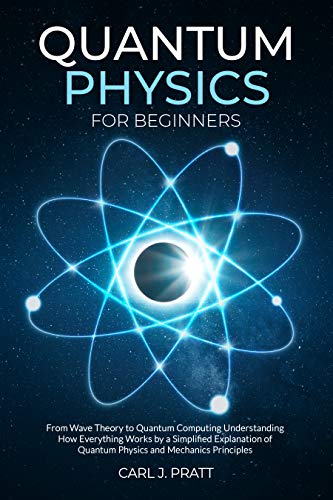When musing upon the vast cosmos that Quantum Field Theory (QFT) inhabits, one finds themselves confronted with an almost paradoxical challenge: the intricate yet alluring landscape of theoretical physics is peppered with esoteric concepts that can enthrall the curious mind, while simultaneously daunting the uninitiated. Therefore, a ponderous question emerges: What is your favorite introductory quantum field theory book? This seemingly innocuous inquiry echoes with the weight of curiosity and intellectual pursuit. However, before you shuffle down the path of your personal favorites, consider the implications of your selection. The vast array of available literature presents a delightful challenge: how do you discern which texts will truly illuminate the shadowy corners of QFT, and which may lead you deeper into obscurity?
To embark on this exploration, we must first delineate the objectives of an introductory quantum field theory book. The ideal text should not merely regurgitate established theories but inspire readers to grapple with complex ideas through engaging prose and elegantly constructed arguments. Furthermore, it should provide a solid foundation in both the mathematical formalisms and the conceptual underpinnings that fuel quantum mechanics and relativistic physics.
In this vein, texts that effectively bridge the chasm between specialized knowledge and approachable pedagogy often emerge as favorites amongst students and aficionados of QFT. Take, for instance, “Quantum Field Theory for the Gifted Amateur” by Tom Lancaster and Stephen J. Blundell. Here lies a sparkling gem of clarity, presenting quantum field principles without presuming an exhaustive background in advanced mathematics. The reader is gently guided through the labyrinthine world of Feynman diagrams, propagators, and the intricacies of gauge theories, awakening the imagination and fostering a robust comprehension of the subject matter.
As we delve deeper, the importance of historical context becomes undeniably significant. Understanding the genesis of QFT is key to appreciating its development. “An Introduction to Quantum Field Theory” by Michael Peskin and Daniel Schroeder is a revered classic known for its meticulous attention to detail and comprehensive scope. This text meticulously constructs its narrative, enriching the reader’s understanding of both the historic and theoretical scaffolding that underpins modern physics. The book’s extensive problem sets challenge the reader’s grasp of concepts and encourage autonomous exploration, effectively transforming theoretical learning into practical application.
Now, juxtaposing these selections, one might venture into the realm of “Quantum Field Theory” by Franz Mandl and Graham Shaw. This concise volume offers a fine balance between rigor and accessibility, serving as an excellent supplementary text. It deftly distills complex ideas into digestible segments, allowing students to cultivate a nuanced understanding without inundating them with overwhelming mathematical intricacies.
And yet, amidst the pantheon of notable textbooks, the question persists: how does one navigate the often treacherous waters of interdisciplinary connections? A compelling choice could be “Quantum Field Theory in a Nutshell” by Anthony Zee. This work commands admiration not only for its whimsical illustrations and conversational tone but also for its integration of disparate concepts from various areas of physics. Zee’s approach renders the material relatable, igniting the reader’s passion for both quantum mechanics and the philosophical ramifications of these frameworks.
Thematic exploration in quantum mechanics is further expanded upon in “Quantum Field Theory: A Modern Primer” by Michael Strassler. This book serves as an astute reminder of the unique symbiosis between theory and experimental verification. Strassler highlights the experimental underpinnings of quantum field theories, extending an invitation to examine how theoretical postulations can align with empirical phenomena. This connection poses a challenge to readers: Can they bridge the gap between abstract theory and tangible reality?
As you consider your preferred book, ponder also the nature of learning. Different methodologies resonate with distinct audiences. For the mathematically inclined, the intricate formalism found in “Quantum Field Theory” by Peskin and Schroeder may provide a robust framework. Contrastingly, those drawn more to conceptual landscapes might find solace in the imaginative terrain mapped by Zee. Thus, the inquiry of personal preference becomes entwined with inquiry into one’s own cognitive approach: are you driven by the pursuit of abstraction or the quest for practical application?
The selection of an introductory quantum field theory book is more than a mere academic endeavor; it embodies a personal journey through the wonders of theoretical physics. Every text, with its unique style and flavor, offers an invitation to grapple with fundamental questions about the universe. Are you prepared to confront these questions head-on? To what extent do you believe that your favorite text might illuminate the shadowy corners of your understanding while simultaneously encouraging you to venture forth with confidence into the dazzling expanse of quantum field theory?
As you sift through the options, reflect upon the synergy between authorial intent and reader interpretation. The best introductory texts do not merely provide knowledge; they catalyze dialogues, provoke thoughts, and inspire further inquiry. Which book, then, will you choose to embark upon this thrilling intellectual odyssey?












